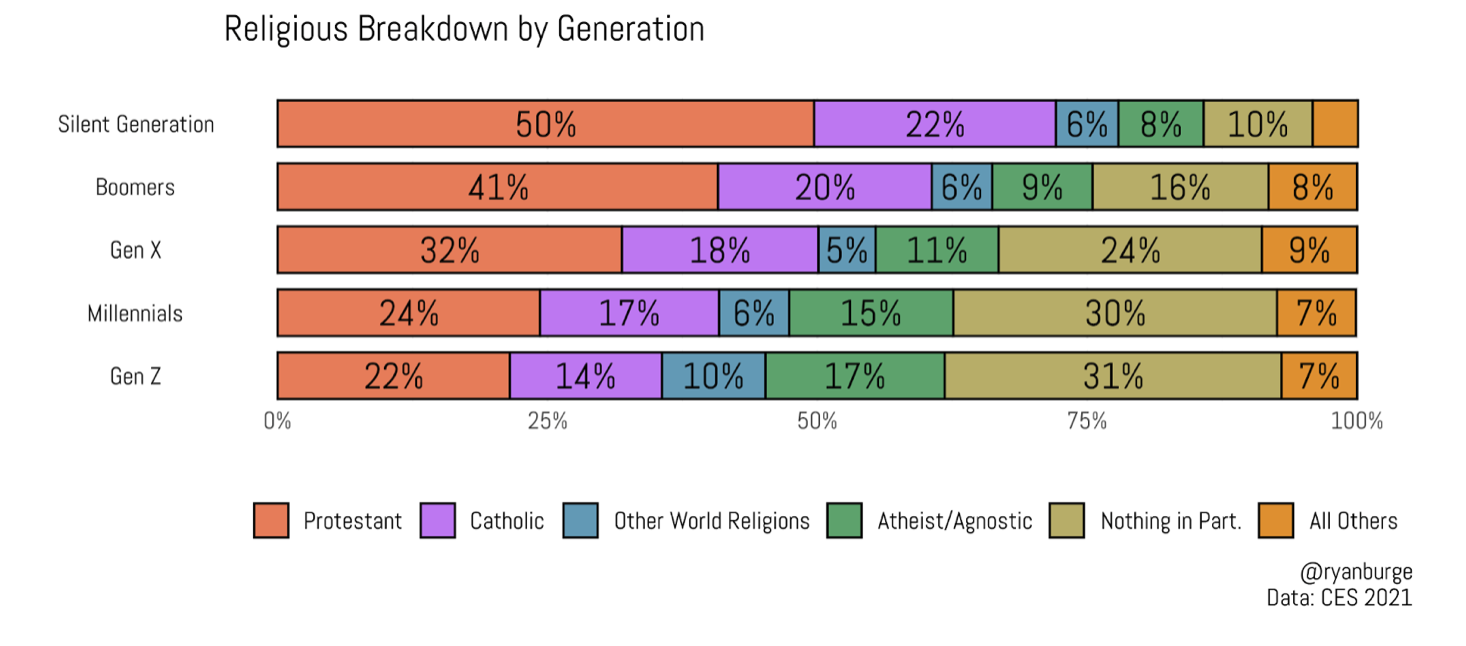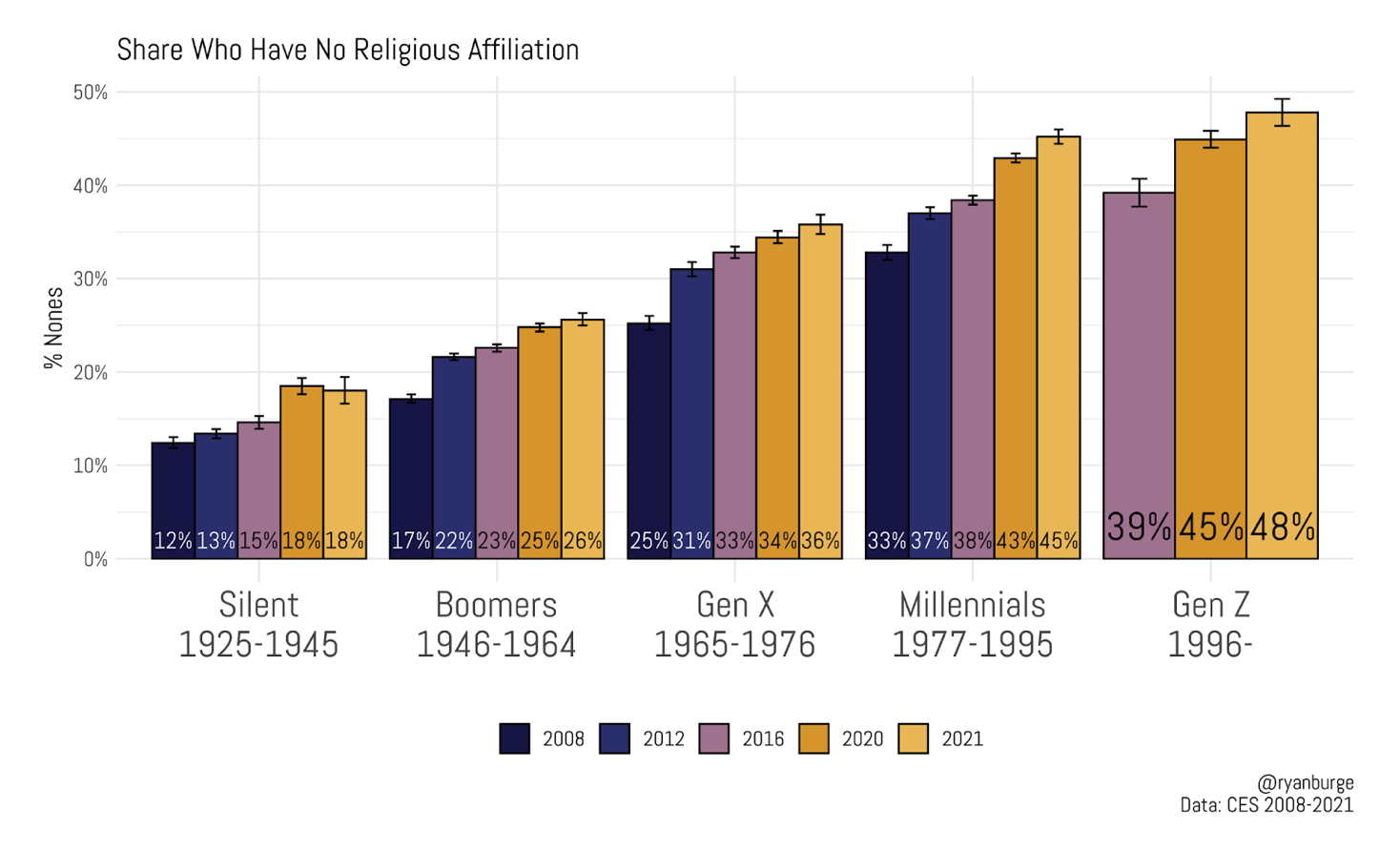It’s been nearly two years since I’ve written a post about the precarious religious position of Generation Z (those born after 1995), and with data from late 2021 available it seems like a prime opportunity to update what we know about their religious inclinations.
Because almost all surveys only contact adult Americans (18+), we can’t get a full picture of the entirety of Gen Z, but just the oldest members of this generation. Thus, here I am analyzing those between the ages of 18 and 25 years old.
Let’s start broadly, comparing the religious composition of different generations beginning with the Silent Generation (who were born between 1925 and 1945).
In this generation, half of all respondents indicated that they were Protestant, while 22% said that they were Catholic. Just 8% of the Silent Generation say that they were atheists or agnostics and nearly the same share describe their religion as “nothing in particular” (10%). In sum, the oldest Americans are 72% Christian and 18% none.
Now, for Generation Z things are much different.
Just 22 % of the youngest adults describe themselves as Protestant — a more than 50% decline from the Silents. Catholics make up 14% of Gen Z, an eight percentage-point dip from the Silent Generation.
Of course, the share of nones is much larger. Seventeen percent of young people describe their religion as atheist or agnostic, and 31% say that they are attached to no religion in particular. Taken together, 36% of Gen Z are Christians, while 48% are nones.
For journalists, there is the news hook: This is the first generation in history in which the nones clearly outnumber the Christians.
Is the rise of the nones accelerating equally among all generational cohorts or is it just happening among the youngest Americans? The answer is a bit nuanced. The graph above visualizes the share who were nones in 2008, 2012, 2016, 2020 and 2021 for each of the five generations mentioned previously.
While just 12% of Silents were nones in 2008, that has risen 50% to 18% today. For Boomers, the increase was from 17% to 26%. Generation X has jumped from a quarter nones in 2008 to 36% in 2021. It’s worth pointing out that there’s a larger share of Gen X nones in 2021 than there were of Millennial nones in 2008. But for each of these three previously mentioned generations, there’s been a steady increase, although that increase seems to have slowed significantly between 2016 and 2021.
For Millennials, that’s not the case. One third of them were nones in 2008. That jumped four percentage points by 2012, but only inched up a single point to 38% between 2012 and 2016. However, from that point forward Millennials have left behind religious affiliation in droves – seeing a seven point increase in just five years.
That same general trend is evident among members of Generation Z. The earliest they showed up in polls was in 2016, when thirty-nine percent were nones. That rose six percentage points by 2020, then crept up another three points just between 2020 and 2021. Now, nearly half of Gen Z says that they have no religious affiliation.
However, there’s also a finding in the data that seems to run counter to the trend previously described. When looking at each generation through the lens of religious service attendance, it would be reasonable to assume that younger generations are less likely to attend services than older Americans. But, that’s not exactly the case.
When it comes to which generation is the most absent from worship it’s not Generation Z, it’s the Millennials and Gen X.
CONTINUE READING: “Gen Z and Religion in 2021” by Ryan Burge at the Religion in Public website.
FIRST IMAGE: Uncredited graphic at the HR Exchange Network website, with post entitled “5 Myths About Gen Z Every Recruiter Should Forget.”




